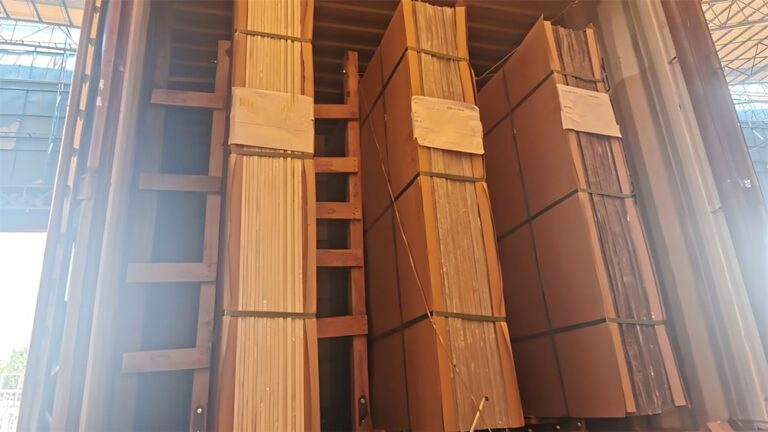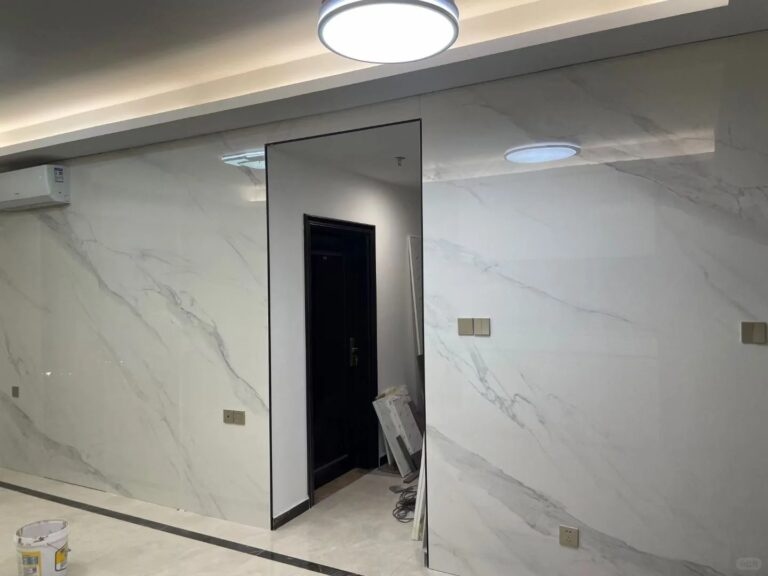Quartz Stone and Sintered Stone countertops have their own characteristics. Quartz Stone is hard, wear-resistant, and easy to clean, suitable for traditional stone textures; Sintered Stone are thin, high-strength, high-temperature-resistant, and stain-resistant, meeting modern design needs. When choosing, you need to consider your personal needs, budget, and manufacturer qualifications.
In modern kitchen design, the choice of countertops is important. Quartz and Sintered Stone countertops are two popular materials in the current market. So, which one is better, Quartz Stone or Sintered Stone Countertop? This article will compare the two materials in detail from the aspects of material characteristics, performance, aesthetic effect, price and environmental protection, to help you make a better decision.
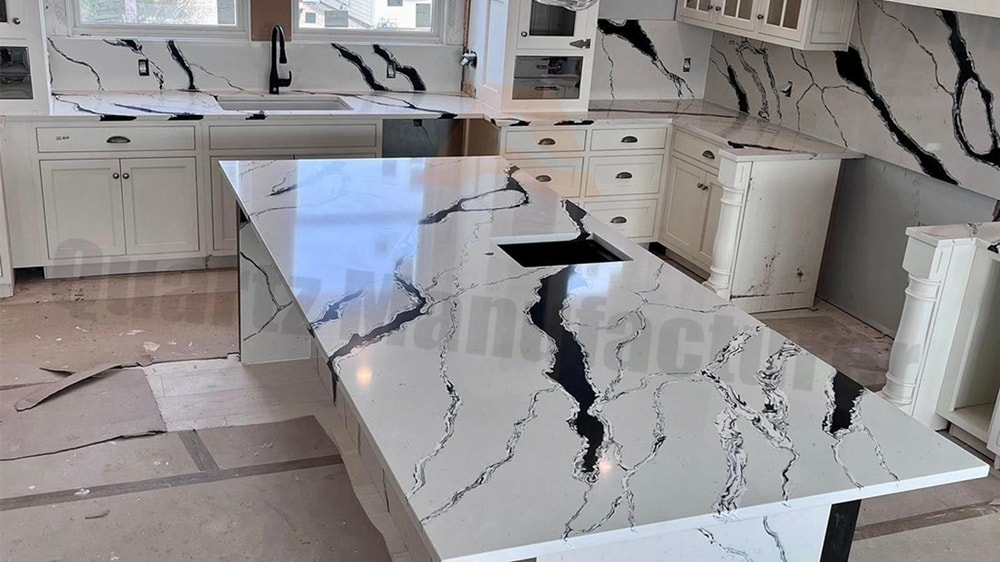
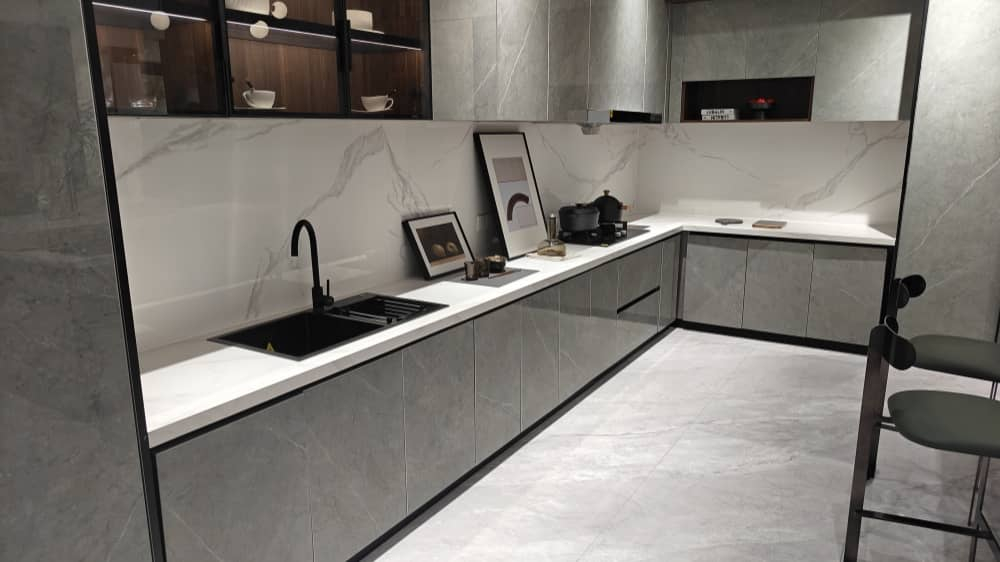
Material Properties
1. Quartz Stone Countertops
Quartz Stone is a man-made stone whose main component is natural quartz crystals, which usually account for more than 90%. The rest is resin, pigments and other additives. Due to its high quartz content, quartz has extremely high hardness and wear resistance. Usually, the Mohs hardness of quartz is around 7, second only to diamond and corundum, and much higher than ordinary natural marble and granite.
During the production process of quartz, quartz crystals are mixed with resins and cured under high pressure and high temperature to form a hard plate. Quartz has a variety of colors and textures that can imitate the appearance of natural stone, while also having more modern design options.
2. Sintered Stone Countertops
Sintered Stone, also known as large porcelain, is a new type of high-tech building material. Its main components are natural minerals such as feldspar, clay, and quartz, which are fired at high temperatures. The preparation process of rock slabs includes multiple high-temperature sintering and high-pressure pressing, which makes it extremely physically and chemically stable.
Sintered Stone slabs are usually thin, but they are very strong and hard, and they are resistant to stains and high temperatures. Sintered Stone comes in a variety of colors and textures to mimic the look of natural stone, wood, and other materials.
Performance
1. Wear resistance
Quartz Stone and Sintered Stone slabs are both known for their high wear resistance. Quartz Stone has a high hardness and is not easy to scratch due to its high quartz content. Although the sintered stone slab is thin, it has excellent hardness and wear resistance due to the high-temperature firing process.
2. Stain resistance
The surface of quartz stone is dense and smooth, and stains are difficult to penetrate, making it relatively easy to clean. The surface of the sintered stone slab is also very dense, and has a strong anti-fouling ability, and almost no water absorption, which is very suitable for high-humidity environments such as kitchens.
3. High-temperature resistance
Quartz stone has good resistance to high temperatures, but because it contains resin components, long-term contact with high-temperature surfaces may be affected. Because the sintered slab is fired at high temperatures, its high-temperature resistance is very good and can directly contact high-temperature objects without damage.
4. Impact resistance
Quartz Stone has strong impact resistance due to its large thickness and strong impact resistance, and is not easy to break in daily use. Although the sintered stone slab is thin, it has very good impact resistance due to its high strength and toughness. However, it should be avoided from direct impact by heavy objects to prevent cracks or breakage.
Aesthetic effect
Quartz Stone and Sintered Stone are highly plastic and diverse in appearance.
1. Quartz Stone
Quartz Stone can imitate the textures of various natural stones, such as marble, granite, etc., and can also create pure colors and other modern design styles. Because it is a man-made material, the color and texture consistency of quartz is very high, and it is suitable for occasions that require large-scale paving.
2. Sintered Stone
The color and texture selection of Sintered Stone is more extensive, and they can imitate various natural materials, such as wood, stone, metal, etc. Due to its thin and large characteristics, Sintered Stone slabs can achieve seamless splicing, bringing a more integrated and high-end visual effect. At the same time, the surface treatment process of Sintered Stone slabs is diverse, and a variety of effects such as matte, gloss, and semi-matte can be achieved to meet different aesthetic needs.
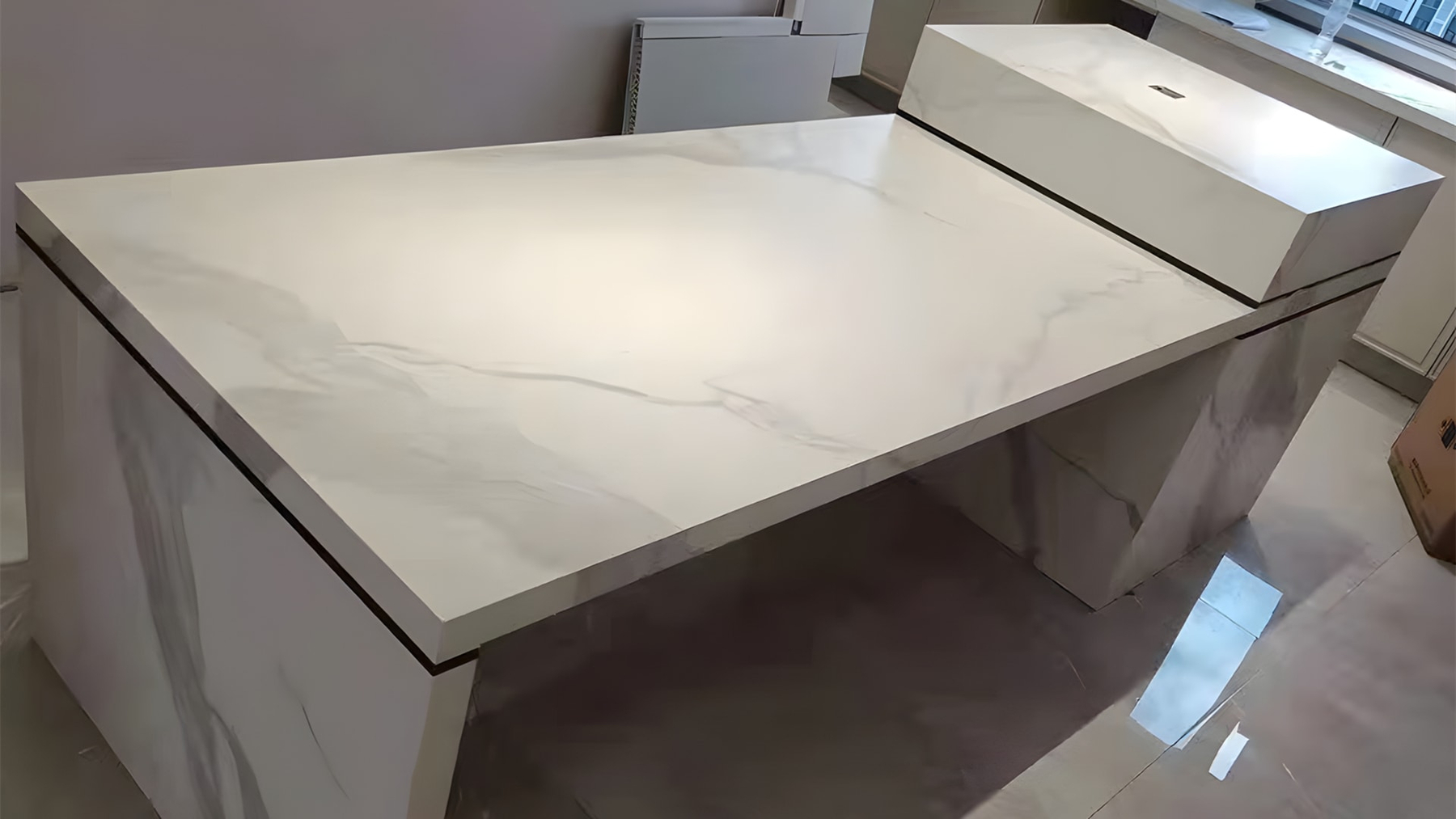
Price Comparison
The prices of quartz and sintered stone slabs vary depending on factors such as brand, specification, color, and texture. Generally speaking, the price of quartz stone is relatively high because its production process is complex and the material cost is high. As a new type of material, the production process of sintered stone slabs is also complex, but due to the strong market promotion, the price is gradually decreasing.
When choosing, consumers should weigh the budget and actual needs. The prices of quartz and sintered stone slabs of high-end brands may not differ much.
Sintered Stone 320x160cm Polished 1.2cm Thickness Price List
Environmental Friendly
In modern society, environmental performance has become an important consideration for consumers when choosing materials.
1. Quartz Stone
The main component of quartz is natural quartz. Although resin and pigment are added during the production process, it is generally environmentally friendly. High-quality quartz countertops will not release harmful substances during use and meet environmental standards.
2. Sintered Stone
The main component of sintered stone slabs is natural minerals, which are formed by high-temperature firing. No harmful substances are added during its production process, which fully meets environmental protection requirements. The sintered stone will not release harmful gases during use and is a very environmentally friendly material.

Summary
Quartz stone and sintered stone have their advantages and disadvantages. Quartz stone has the characteristics of high hardness, wear resistance, and easy cleaning, which is suitable for consumers who pursue traditional stone texture. Sintered Stone, with their lightness, high strength, high-temperature resistance, and stain resistance, meet the high requirements of modern design for materials.
When choosing countertop materials, consumers should make comprehensive considerations based on their own needs and budget. If you pursue high-end visual effects and excellent performance, sintered stone may be a better choice; if you pay more attention to traditional stone texture and stable performance, quartz stone is a good choice.
No matter which material you choose, you need to pay attention to the manufacturer’s qualifications and product quality, and choose a reputable brand to ensure the service life and safety of the countertop.
IN THE END
As A New Stone Product, SINTERED STONE Has Become A Strong Competitor To Marble, Granite And Quartz Stone. Sintered Stone Is A Stone You Can Not Ignore. If You Are Looking For an Original Factory That Supplying Pricing And High-Quality Sintered Stone, Or You Want to Develop A Brand Of Your Own, Come To Us, We Are The Right Choice.
CONTACT US AT
Email: austin@linxsurfaces.com
WhatsApp: +86 180 0549 3293
USEFUL LINKS
YOUTUBE CHANNEL: LINX SURFACES CHINA
WIKI: Sintered Stone Linx “Wikipedia”



